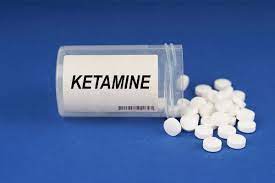Ketamine, a dissociative anesthetic first synthesized in 1962, BUY KETAMINE HCL ONLINE has come a long way from its initial use as a battlefield anesthetic during the Vietnam War. Today, it stands at the frontier of medical innovation, with applications ranging from surgery to mental health treatment. This article explores ketamine’s history, its unique pharmacological properties, and its transformative impact on modern medicine.
A Brief History of Ketamine
Ketamine was developed as a safer alternative to phencyclidine (PCP), which was notorious for its severe psychotropic side effects. The drug quickly gained approval from the U.S. Food and Drug Administration (FDA) in 1970 as an anesthetic, earning a reputation for its effectiveness and wide safety margin. Its dissociative properties allowed for anesthesia without significantly suppressing respiratory function, making it ideal for use in war zones and emergency surgeries.
In the decades following its approval, ketamine found applications beyond the operating room, including in veterinary medicine and, controversially, recreational drug use. By the 1990s, researchers began uncovering its potential as a rapid-acting antidepressant, sparking a renewed interest in its therapeutic possibilities.
How Ketamine Works
Ketamine exerts its effects primarily by acting on the N-methyl-D-aspartate (NMDA) receptor, a key component in the brain’s glutamate system. Glutamate, the most abundant excitatory neurotransmitter, plays a critical role in neural plasticity, learning, and memory.
By blocking NMDA receptors, ketamine induces a state of dissociation, reducing sensory perception and creating an “out-of-body” experience. However, its therapeutic effects, particularly in mental health, extend beyond this dissociation. Ketamine stimulates the release of brain-derived neurotrophic factor (BDNF) and promotes synaptic connectivity, essentially “rewiring” neural circuits that have been impaired by depression or stress.
Medical Applications of Ketamine
1. Anesthesia
Ketamine’s original and most well-established use is in anesthesia. Its rapid onset, combined with the preservation of airway reflexes and cardiovascular stability, makes it invaluable for certain surgical procedures. It is particularly useful in pediatric anesthesia and in low-resource settings where advanced monitoring equipment may not be available.
2. Depression and Mental Health
One of ketamine’s most exciting breakthroughs is its use in treating depression, particularly treatment-resistant depression (TRD). Traditional antidepressants like selective serotonin reuptake inhibitors (SSRIs) can take weeks to show effects, and many patients experience little to no relief. In contrast, ketamine—often administered intravenously or as a nasal spray—can alleviate depressive symptoms within hours.
Studies have also shown its efficacy in addressing suicidal ideation, post-traumatic stress disorder (PTSD), and anxiety disorders. The FDA approved esketamine, a derivative of ketamine, as a nasal spray for TRD in 2019, cementing its role in psychiatric care.
3. Pain Management
Ketamine has proven effective in managing chronic pain conditions such as complex regional pain syndrome (CRPS), fibromyalgia, and neuropathic pain. By modulating the glutamate system and dampening central sensitization, ketamine offers relief where conventional painkillers often fail.
4. Substance Use Disorders
Emerging research suggests that ketamine may help in treating addiction. Its ability to disrupt maladaptive neural patterns and promote plasticity offers hope for individuals struggling with alcohol, opioid, or cocaine dependency.
The Dark Side: Misuse and Controversy
While ketamine’s medical potential is undeniable, its misuse as a recreational drug has led to controversy. Known colloquially as “Special K,” ketamine is used illicitly for its hallucinogenic and euphoric effects. Chronic misuse can lead to severe bladder toxicity, cognitive impairments, and addiction.
Governments worldwide have implemented measures to regulate its distribution, balancing its therapeutic value with the need to curb abuse. These efforts, however, highlight the tension between maximizing ketamine’s benefits and minimizing its risks.
Looking Ahead: The Future of Ketamine
Ketamine’s renaissance in the 21st century marks a paradigm shift in how we approach mental health and chronic pain. Clinics offering ketamine-assisted therapy are proliferating, and ongoing research continues to refine its applications. Some scientists are exploring oral and sublingual formulations to improve accessibility, while others are investigating combinations of ketamine with psychotherapy to enhance its efficacy.
However, questions remain about its long-term effects, optimal dosing strategies, and the mechanisms underlying its therapeutic benefits. Addressing these challenges will be key to ensuring ketamine’s place as a cornerstone of modern medicine.
Conclusion
Ketamine’s journey from a battlefield anesthetic to a psychiatric game-changer is a testament to its versatility and untapped potential. As research progresses, it is becoming increasingly clear that ketamine represents more than just a medical tool—it is a symbol of hope for those suffering from conditions long deemed intractable. Whether it’s alleviating chronic pain, lifting the weight of depression, or guiding us toward new therapeutic frontiers, ketamine is redefining the possibilities of modern medicine.

